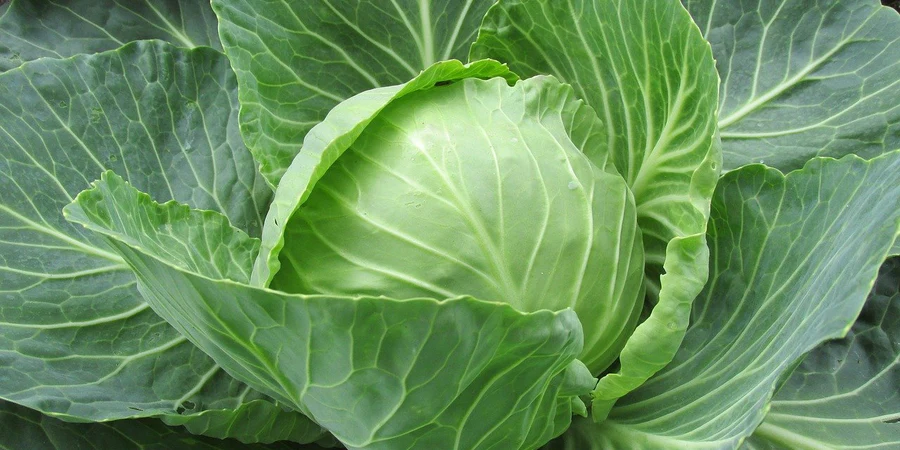How To Grow Cabbages

Cabbages are an indispensible vegetable found in various shapes, colours and sizes making it possible to harvest all year. Cabbages were brought across to our shores by the Romans from its origins what is now present-day Turkey.
These biennial plants have short stems with thick, succulent, waxy outer leaves which tightly gather to the middle to create a firm blanched head and blanched heads used both in the kitchen with the other leaves turned into a bulky feed for farm animals.
Here's Our Guide to Growing Cabbage:
How, Where & When to Grow Cabbage
Plants prefer rich soil and sunny site to perform well. Wherever possible, prepare the soil in autumn by adding well-rotted manure or garden compost and then leave it over winter to consolidate. Before planting cabbages, make sure the soil is well firmed by shuffling along the surface on your heels, then rake it flat. In early spring start seeds under protection in seed trays thinning out to individual 7cm pots before settling them into final planting position. Or in late spring, start seeds outdoors in a stale seedbed in drills 3cm deep, thinning out to 10cm before digging up and settling them into their final planting position.
Distance
Final position takes place when seedlings have 3-4 true leaves. Place collars around the young plants to protect them against cabbage root fly. Spring cabbage spacing 15cm between plants and rows. Summer and autumn varieties s[aced 30-40cm between plants and rows and winter variety spaced 45cm between plants and rows.
Regular Care
Keep plants well watered during dry summer spells and in early summer provide a high nitrogen feed. Protect against cabbage white butterfly by netting the crops and protect plants against slug pest too. If club root is a problem then try a resilient variety such as Kilaton.
Harvesting Cabbage
Cabbage is ready to harvest when the plant as a firm head formed in the centre of the plant. Use a sharp knife to cut and clear away any plant debris.

Cabbage Tip for a Bonus Crop
Cut the head off but leave the stalk in position with a few leaves when harvesting spring and early summer cabbages. Make a cross shaped cut in the top of the stalk about a centimetre deep. Feed with some high nitrogen fertiliser and water well. Often the plant will reward you with 4 baby cabbages a month or two later for almost no effort at all.
Nutrition
Cabbage contains just 21 calories per 100g, being 90% water. It has a little protein at 1g per 100g, negligible fat and around 4g per 100g of carbohydrates, from naturally occurring sugars. Cabbage is also quite a good source of fibre at 3g per 100g. Cabbage has a good mix of vitamins and minerals, especially folate, which is essential during pregnancy and also helps the body to produce red blood cells. It also contains vitamin C, which helps protect our cells by acting as an antioxidant, and potassium, which we need for a healthy heart.
Cooking
The humble Cabbage has many culinary uses to increase your recipe repertoire, such as simply adding to a stir-fry, eat it raw and create your own coleslaw for salads, and for the more adventurous palates try Kimchi!
Growing Guides
If you're thinking of sowing other vegetable and herb seeds, discover more of our growing guides.




